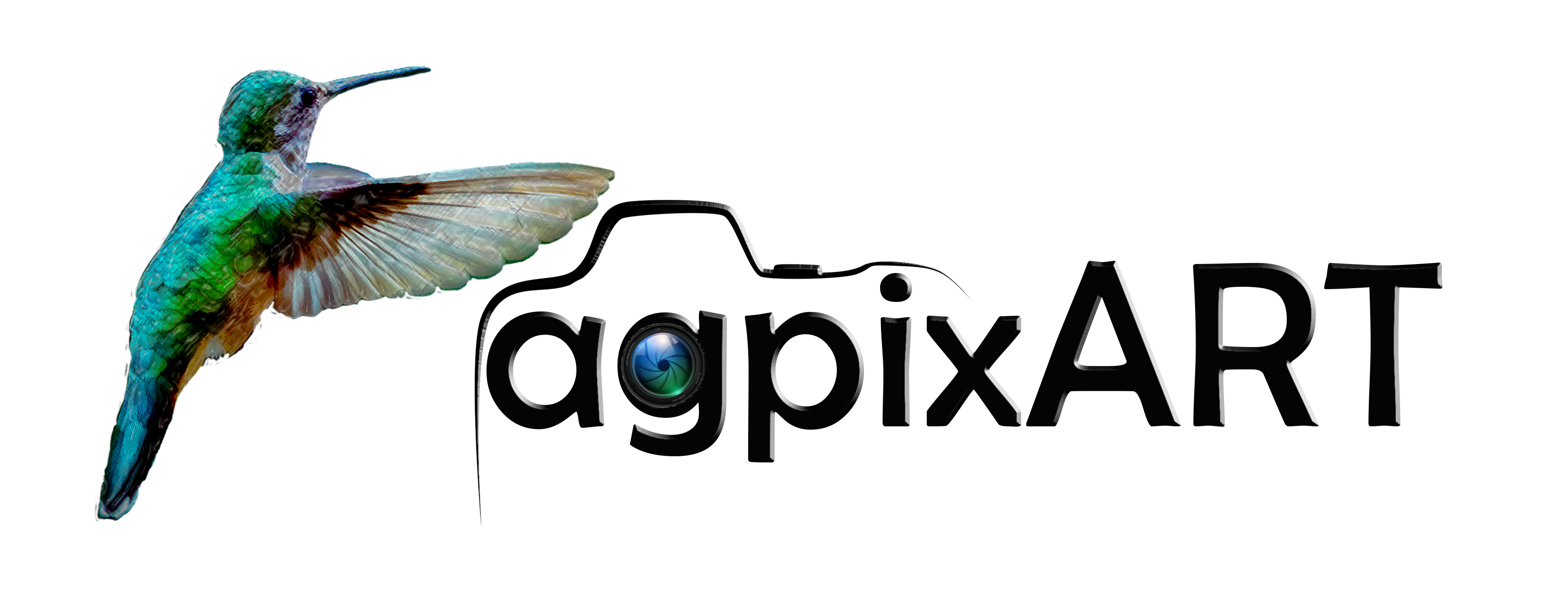Punta Espinoza, Fernandina
Punta Espinoza is a visitor site on the northeastern tip of Fernandina Island, the youngest, westernmost and most volcanically active island in the Galápagos Archipelago.
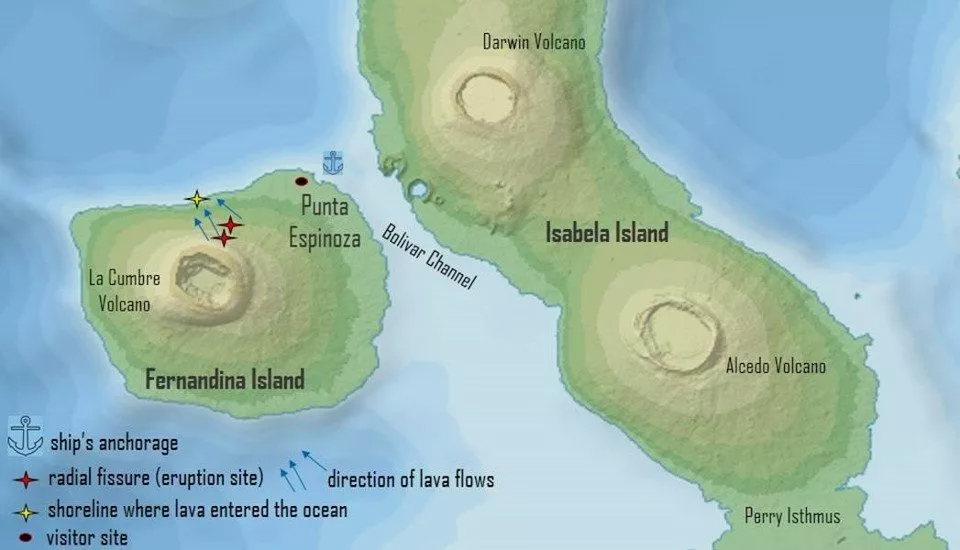
Explore Punta Espinoza, Fernandina Island
Galápagos Dragons Kingdom
Punta Espinoza is known for its pristine, rugged landscape dominated by black lava fields from recent volcanic activity (Fernandina’s La Cumbre volcano last erupted in 2020), interspersed with mangroves and tidal pools. The stark, otherworldly terrain highlights the island’s geological youth.
Punta Espinoza hosts one of the densest marine iguana populations, with hundreds sometimes seen in a single “mess”, warming themselves after foraging for algae underwater. Their dark coloration blends with the volcanic terrain.
Playful Galápagos sea lions can also be spotted lounging on the rocks or swimming near the shore. Occasionally Galápagos hawks can be seen soaring or perched, preying on small animals.
Vegetation is sparse due to the arid climate, but mangroves thrive near the coast, and cacti like Opuntia and Brachycereus nesioticus dot the landscape. These spiky survivors thrive in harsh conditions, supporting local wildlife like finches.
Good To Know…


What-to-See
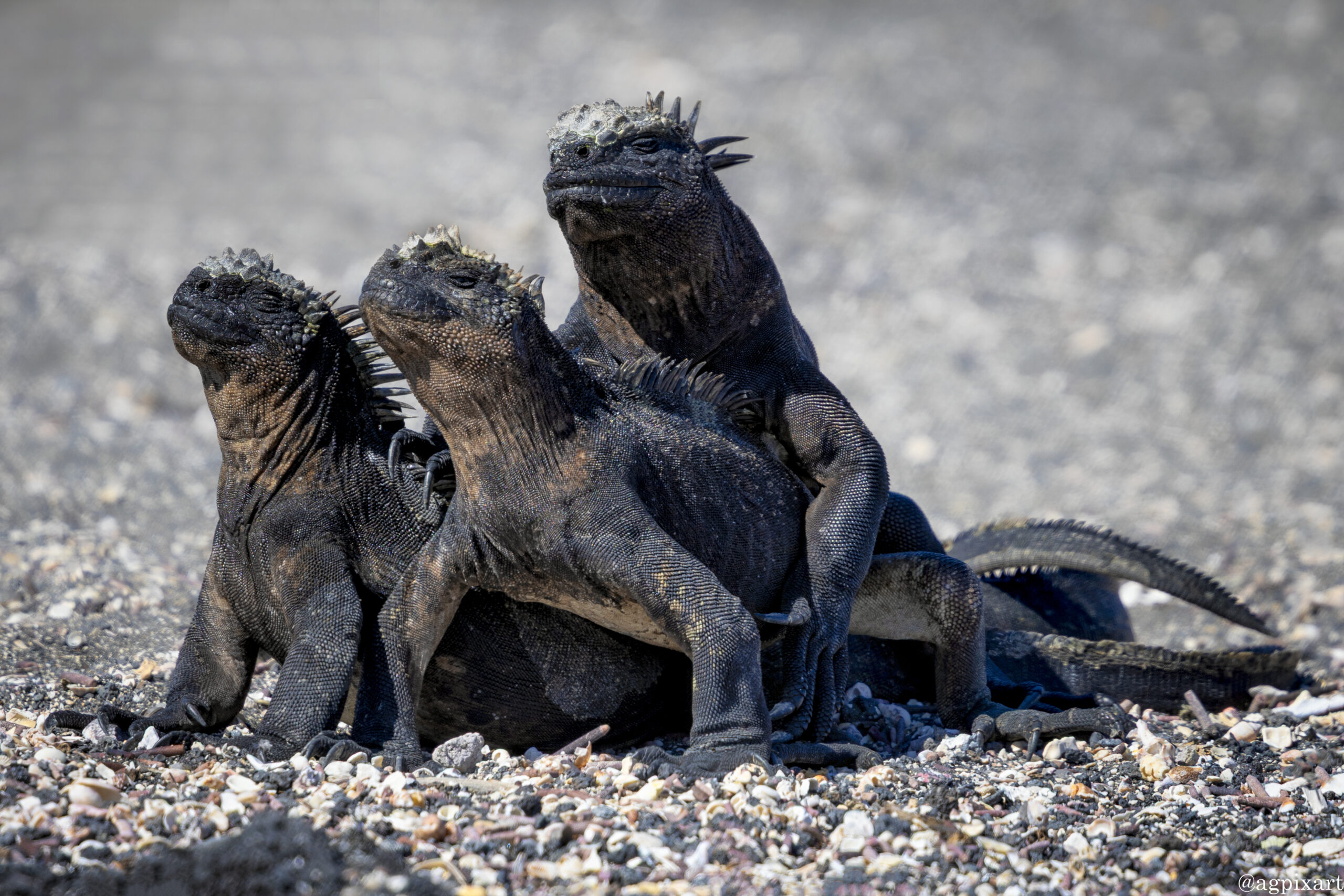
Marine Iguanas
Marine iguanas (Amblyrhynchus cristatus), abundant at Punta Espinoza, are nicknamed this for their prehistoric look and spiky crests, especially when sprawled across lava rocks like mini dinosaurs. They are the world’s only seafaring lizards with clawed feet and a laterally flattened tail that aids swimming. Salt glands expel excess salt via sneezes, creating white “wigs” on their heads. Males reach up to 1.3 m long and 10 kg; females are smaller, 0.6–1 m. They are dark gray to black skin, blending seamlessly with Punta Espinoza’s lava rocks, often with reddish or greenish tinges post-breeding. Spiky dorsal crest and blunt snout give a prehistoric look. Juveniles are lighter gray. Primarily herbivorous, they feed on algae scraped from submerged rocks. Larger males dive deeper, while females and juveniles forage in tidal pools.

Galápagos Sea Lions
Sea Lions (Zalophus wollebaeki), playful and curious, are called sea puppies for their dog-like barks and puppyish antics in the water. Males grow up to 2.3 m long and 200–400 kg, with a muscular build and a thick neck. Females are smaller, reaching 1.8 m and 60–120 kg. Pups weigh 6–8 kg at birth. Sleek, chocolate-brown coats shimmer when wet, fading to a lighter tan when dry. Streamlined bodies, strong flippers, and external ear flaps (unlike true seals) make them agile swimmers. They are highly social, forming colonies with loose hierarchies. Males develop a pronounced forehead “sagittal crest” with age. Pups are darker with big, expressive eyes. Mothers leave pups for hours (sometimes 1–2 days) to hunt fish and squid offshore. Pups frolic in shallow tidal pools, nicknamed “pup playpens,” where they practice swimming, play-wrestle, or nap.

Galápagos Hawks
Galápagos Hawks (Buteo galapagoensis), majestic and endemic raptors are occasionally spotted at Punta Espinoza. As apex predators, they command the skies, preying on lava lizards and marine iguana hatchlings. They are medium-sized, about 45–56 cm long with a 116–140 cm wingspan, weighing 680–1,200 g. Males are smaller than females. Both have dark brown to black plumage with a mottled white-brown chest. Adults have a grayish tail with fine bars, yellow cere (base of beak), and piercing yellow eyes. Juveniles are lighter brown with streaked underparts. Broad wings, sharp talons and a hooked beak are perfect for soaring and tearing prey. They are polyandrous, with one female mating with up to eight males, a rare trait. Nests, built of sticks in mangroves or on lava outcrops, hold 1–3 eggs, incubated mainly by the female for 37–38 days.
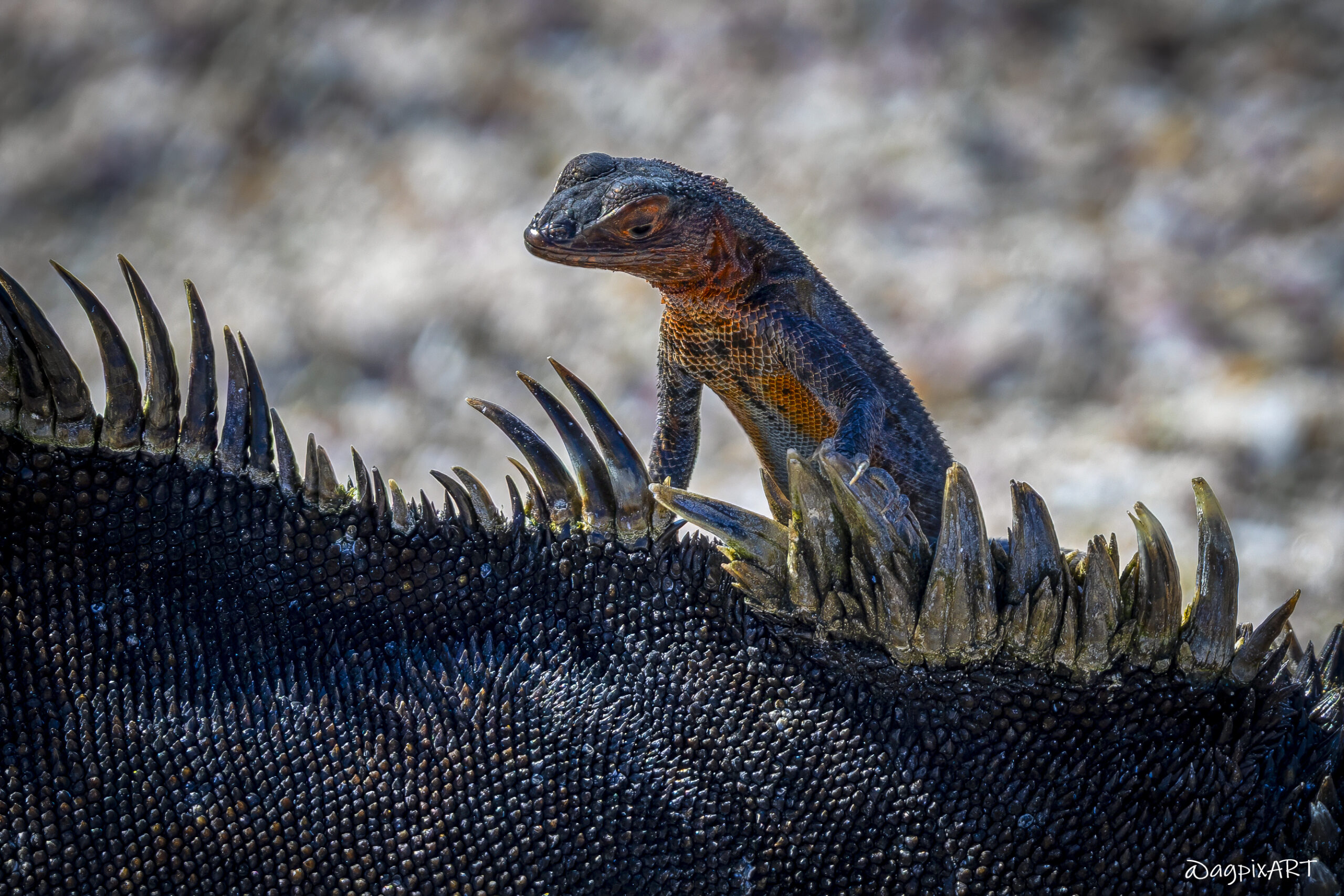
Lava Lizard
Tiny endemic lizards (Microlophus species) are a highlight of the site’s volcanic landscape, perfectly adapted to its rugged lava fields. They are small, 15–25 cm long (including tail), with males larger and more colorful than females. Males have mottled gray, brown, or black skin with yellow or reddish throat patches. Females are duller, often with a red or orange throat during breeding. They’re territorial, with males defending prime spots via head-bobbing and push-up displays. They are insectivores, feeding on ants, beetles, and spiders, often seen darting to snatch prey near tidal pools or mangroves. They occasionally eat plant matter. They’re bold, coexisting with marine iguanas and sea lions, and are unbothered by human visitors, making them easy to spot.

Flightless Cormorant
The endemic Flightless Cormorant (Phalacrocorax harrisi), is found only on Fernandina and Isabela. Males perform quirky courtship rituals, offering females seaweed “gifts” and swimming in synchronized zig-zags to impress their mates. As the only cormorant species in the world that has lost the ability to fly, it’s a striking example of evolutionary adaptation. Dark brown to black, with a glossy sheen in sunlight. They have bright turquoise eyes, a long, hooked bill, and strong, webbed feet for swimming. Small, vestigial wings (about 1/3 the size of a typical cormorant’s) are useless for flying but used for balance. They can dive up to 70 meters deep, chasing prey with agility that rivals marine iguanas. After diving, they perch on lava rocks, spreading their tiny wings to dry.
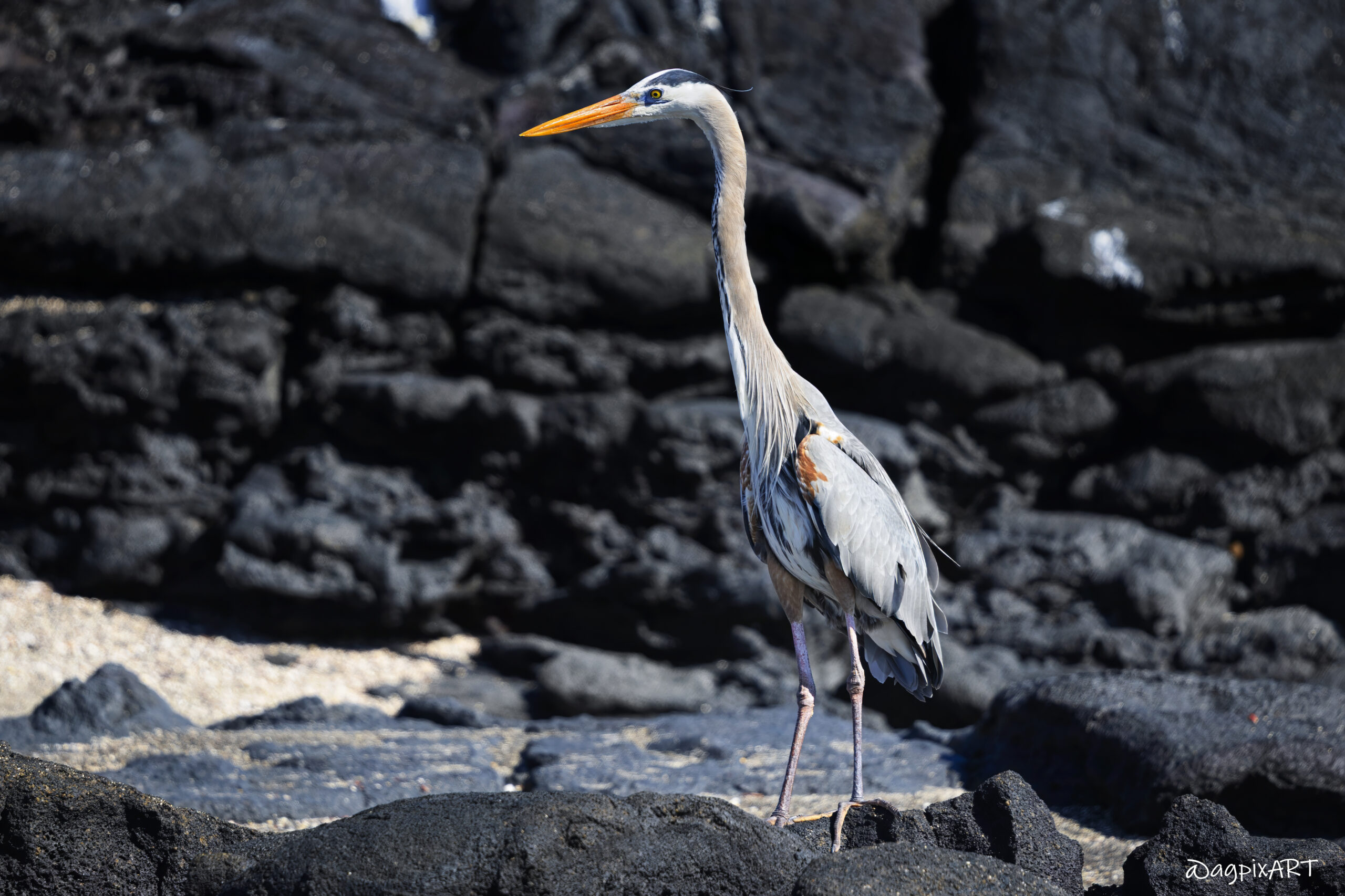
Blue-Gray Heron
Great Blue Herons (Ardea herodias cognata) are the largest heron in Galapagos, endemic subspecies cognata. Though called ‘blue,’ is actually a largely gray bird standing up to 1.4 m tall with a 2 m wingspan. Blue-gray feathers, white face with a black stripe, white crown, and a long, striking yellow pointed bill. They have unique chestnut-colored feathers adorning its thighs. Females share similar plumage with males but are slightly more petite.
Juveniles sport darker tones than adults, distinguished by a deeper, duskier crown.
They hunt fish and crustaceans in shallow waters with a slow, stalking gait.
They supplements their diet of fish and crustaceans with lizards, small birds, and juvenile marine iguanas.

Brown Pelican
The endemic Galápagos subspecies (Pelecanus occidentalis urinator) is large, about 1–1.4 m long with a 2–2.5 m wingspan, and weighing 2.7–5 kg. Adults have grayish-brown plumage, a white or yellowish head during breeding, and a distinctive throat pouch. Breeding males develop a chestnut hue on their neck. Juveniles are duller brown with pale underparts.
Brown Pelicans’ large, elastic bill pouch (up to 11 liters) is used to scoop fish.
At Punta Espinoza, they are often seen gliding low over the water or perched on lava rocks and mangroves along the rocky shore. They perform spectacular plunge dives from 10–30 m to catch fish like sardines and mullet, stunning prey with their impact before scooping it into their pouch.
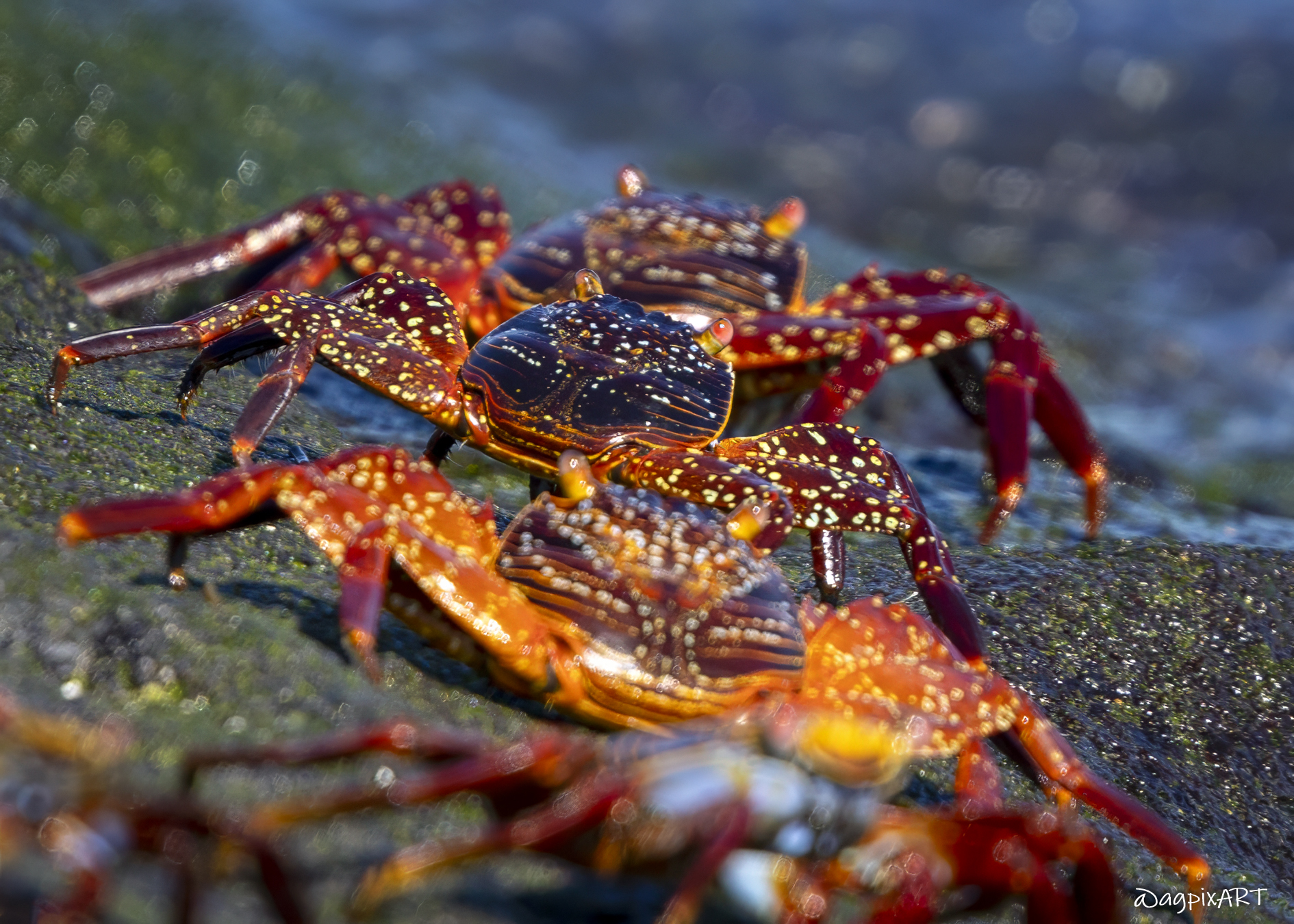
Sally Lightfoots Crabs
Sally Lightfoot Crabs (Grapsus grapsus) adults are vibrant red, orange, or blue with a pale white or blue underbelly, standing out against Punta Espinoza’s black lava rocks. Juveniles are dark brown or black with red spots for camouflage. They have five pairs of legs, with front claws (chelae) for grasping food. Their broad, flat legs allow agile movement, often described as “spider-like.” These crabs are opportunistic omnivores, feeding on red and green algae, dead fish, bird droppings, sea lion placenta, baby sea turtles, and even other crabs. They also eat ticks off marine iguanas, forming a symbiotic “cleaning crew” relationship. Known for their incredible agility, they run in four directions, leap, and climb vertical slopes, making them nearly impossible to catch.
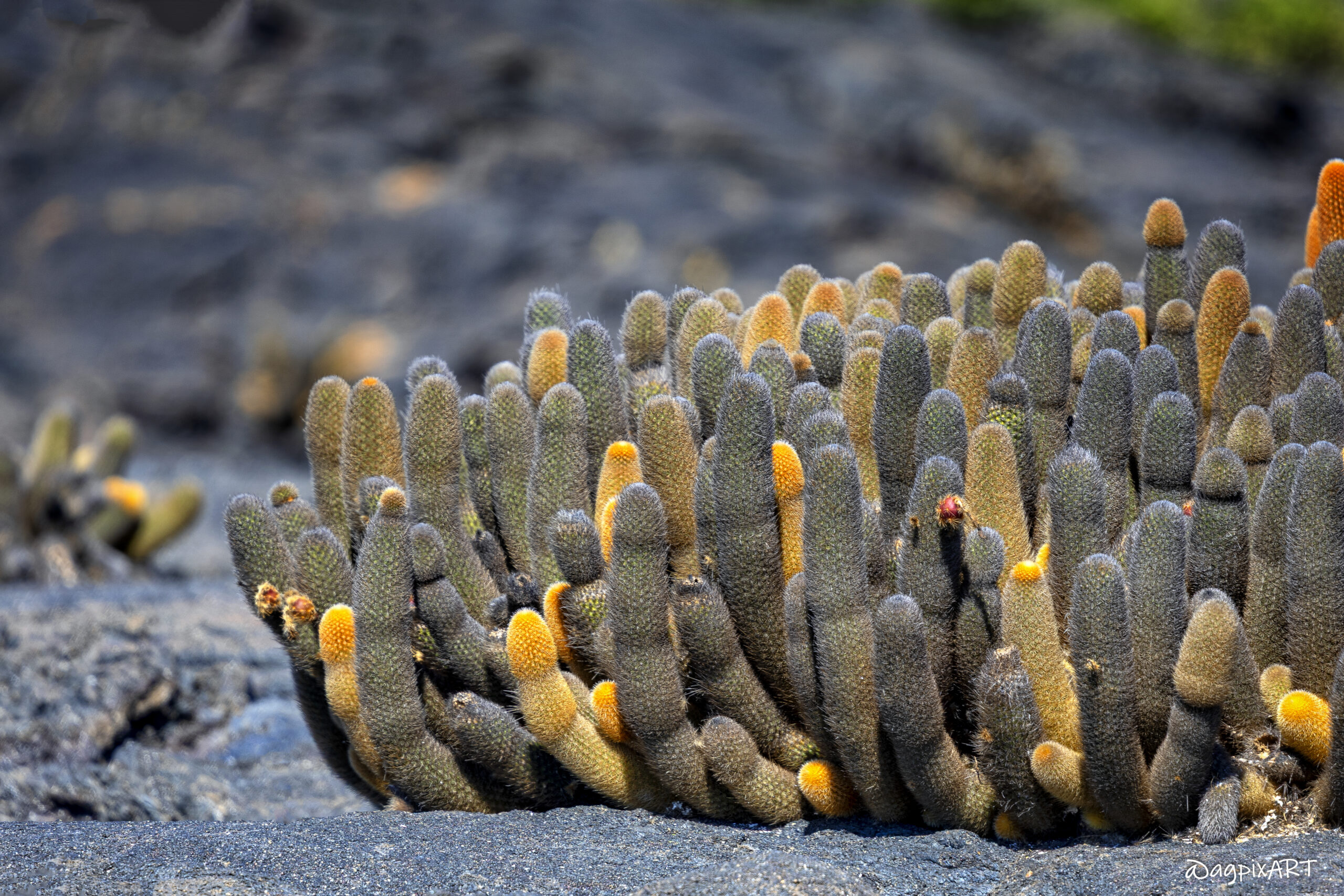
Lava Cactus
The Brachycereus nesioticus, an endemic cactus colonizing Punta Espinoza’s lava fields is nicknamed Pioneer Cactus for being one of the first plants to thrive in the harsh, barren lava fields. They form a succulent subshrubs, growing up to 60 cm (24 in) tall and 2 m (6.6 ft) wide, with dense clusters of cylindrical stems. Stems are yellow with green or brown tones, featuring 16–22 ribs. Each areole bears up to 40 yellowish spines (0.5–5 cm long), darkening with age. They produce solitary, narrowly funnel-shaped flowers that are white to yellowish-white, opening during the daytime. Red to brown fruits, covered in yellow spines, contain black seeds. As a pioneer species, they break down volcanic rock, creating soil for other plants, like Opuntia cacti, to follow.
Instructions for photo proofing and comments:
Left-click on the photo to access options for title information (i), leave comment, or mark the photo(s) as the favorite. The option to submit the selected as favorite photos is under “Submit proofs” button under photo gallery.
